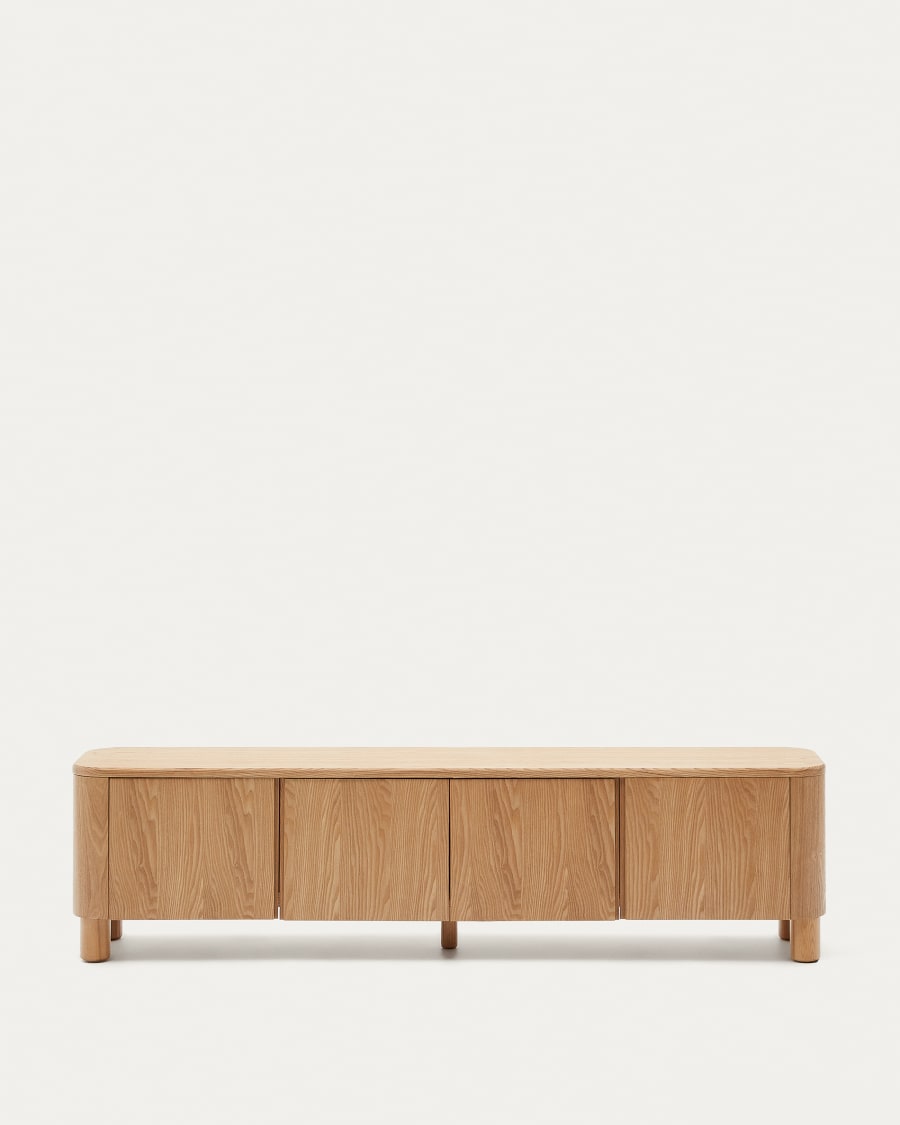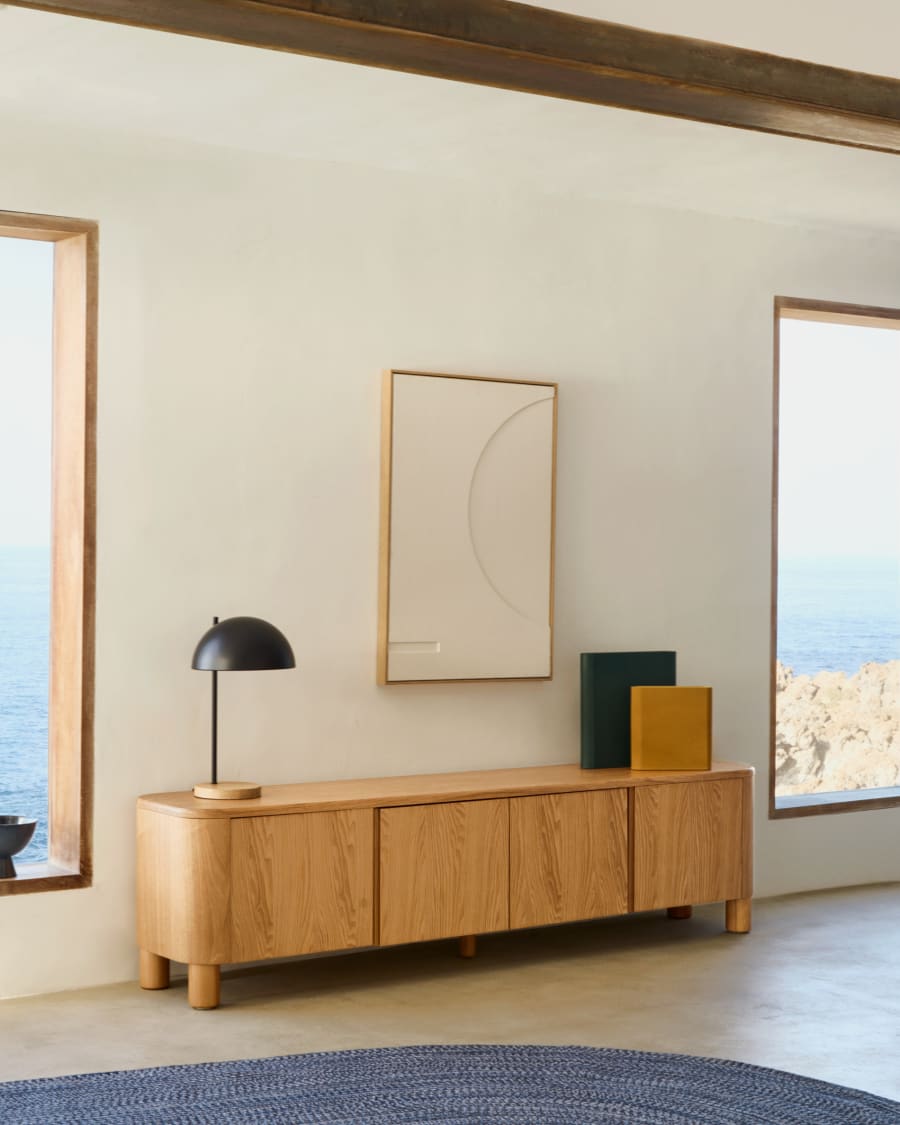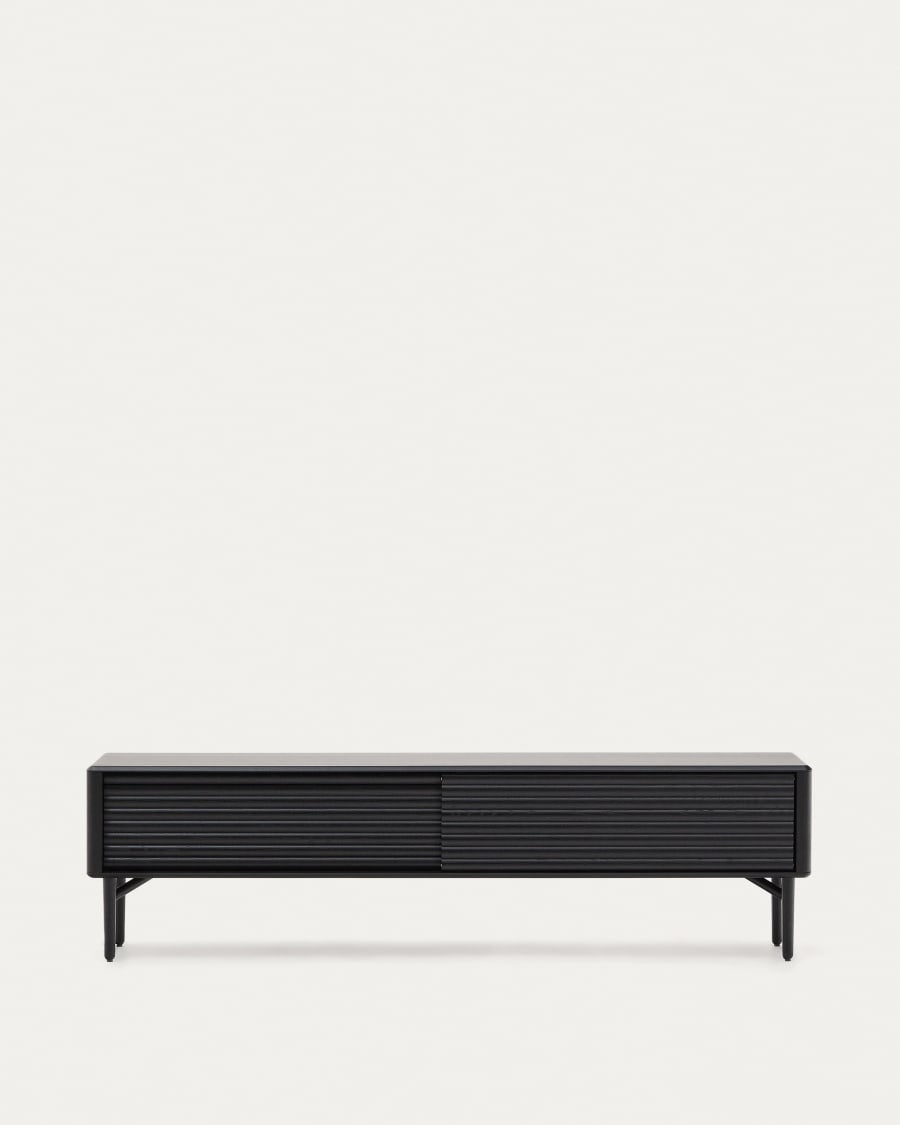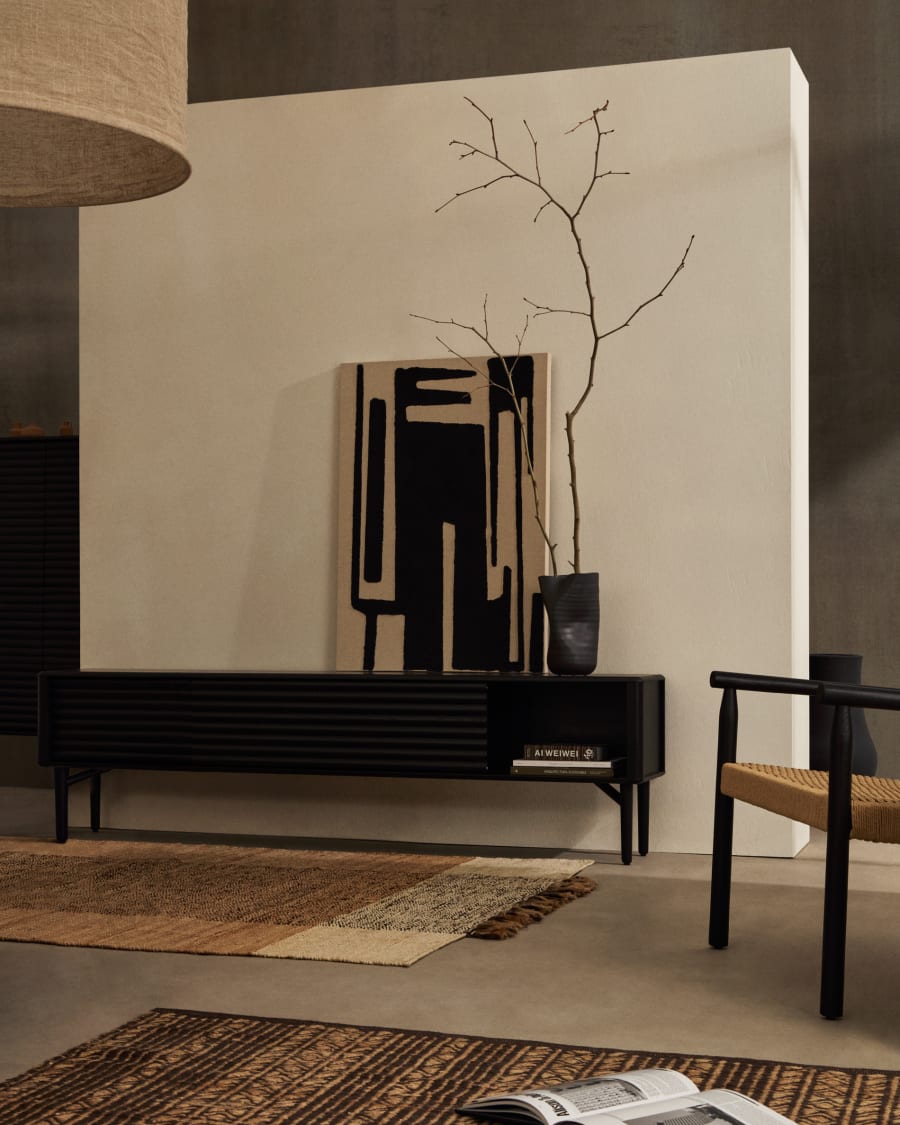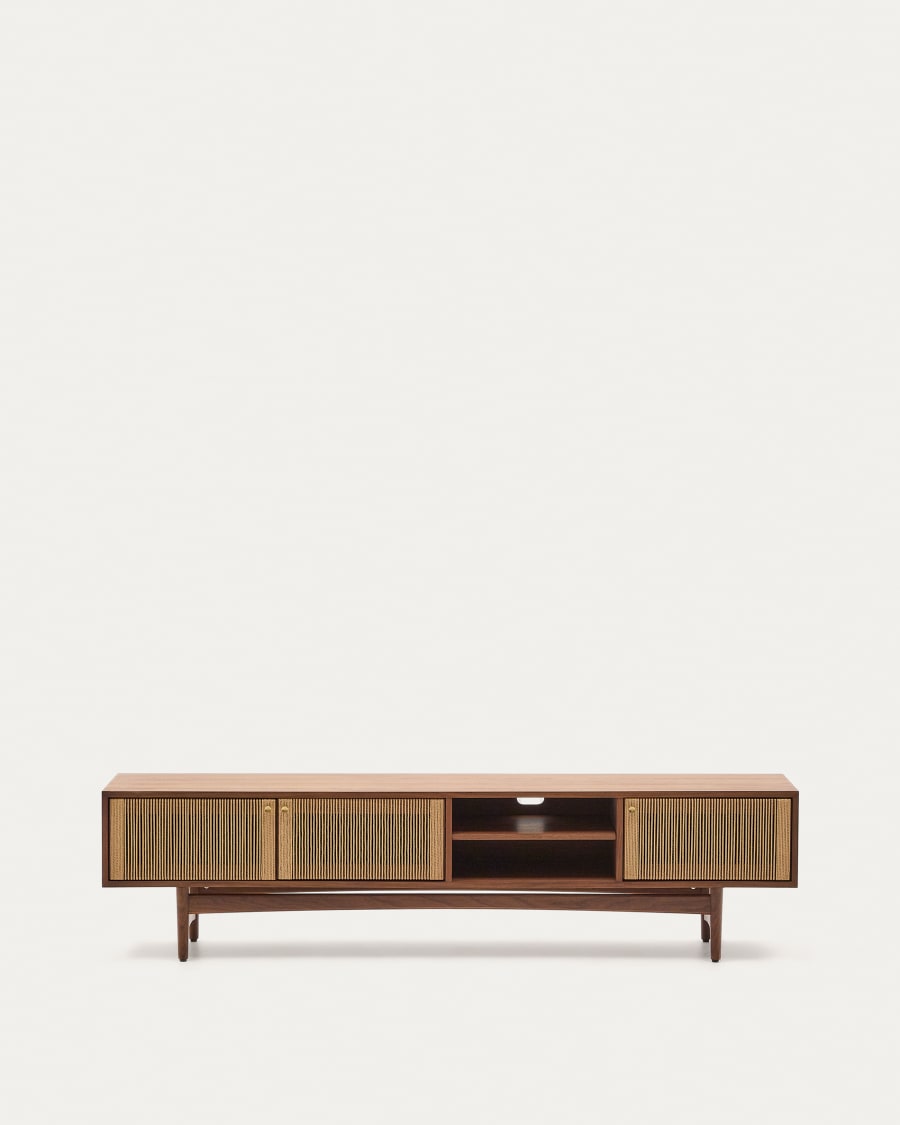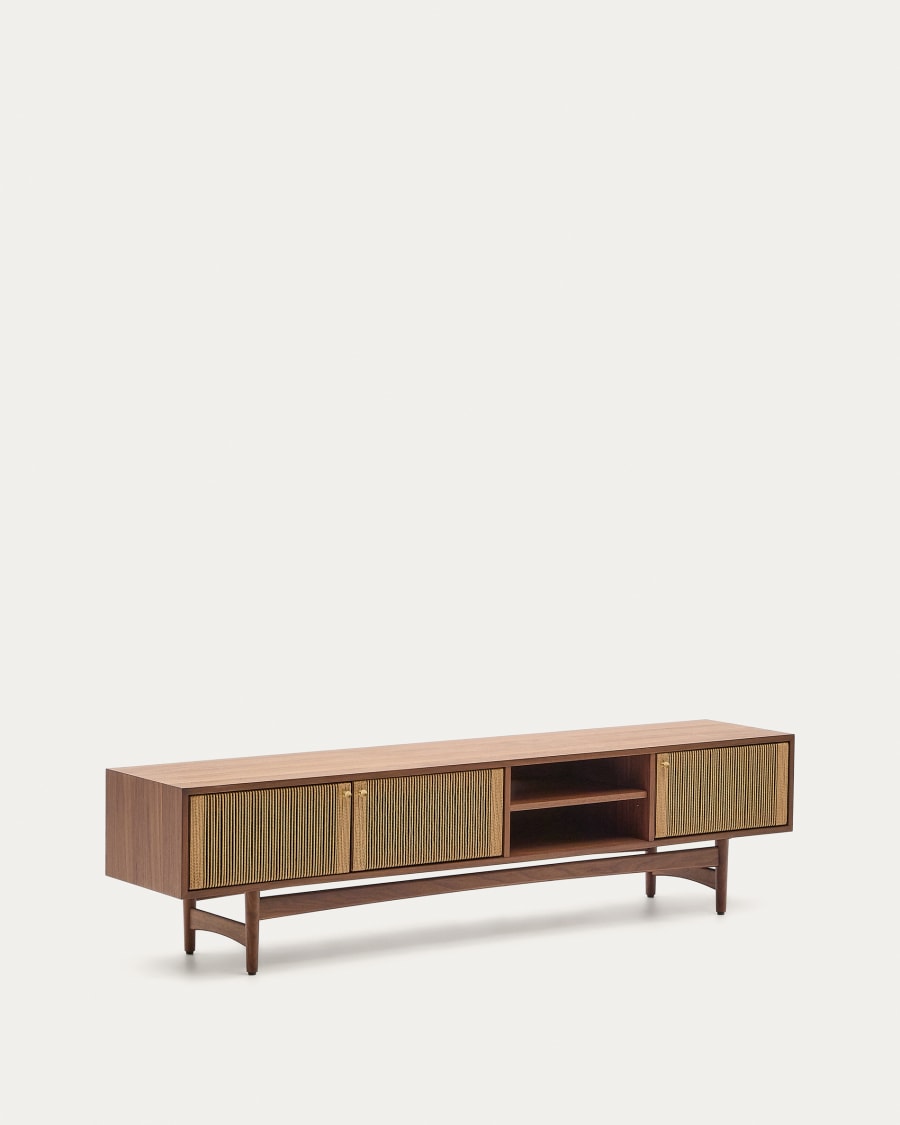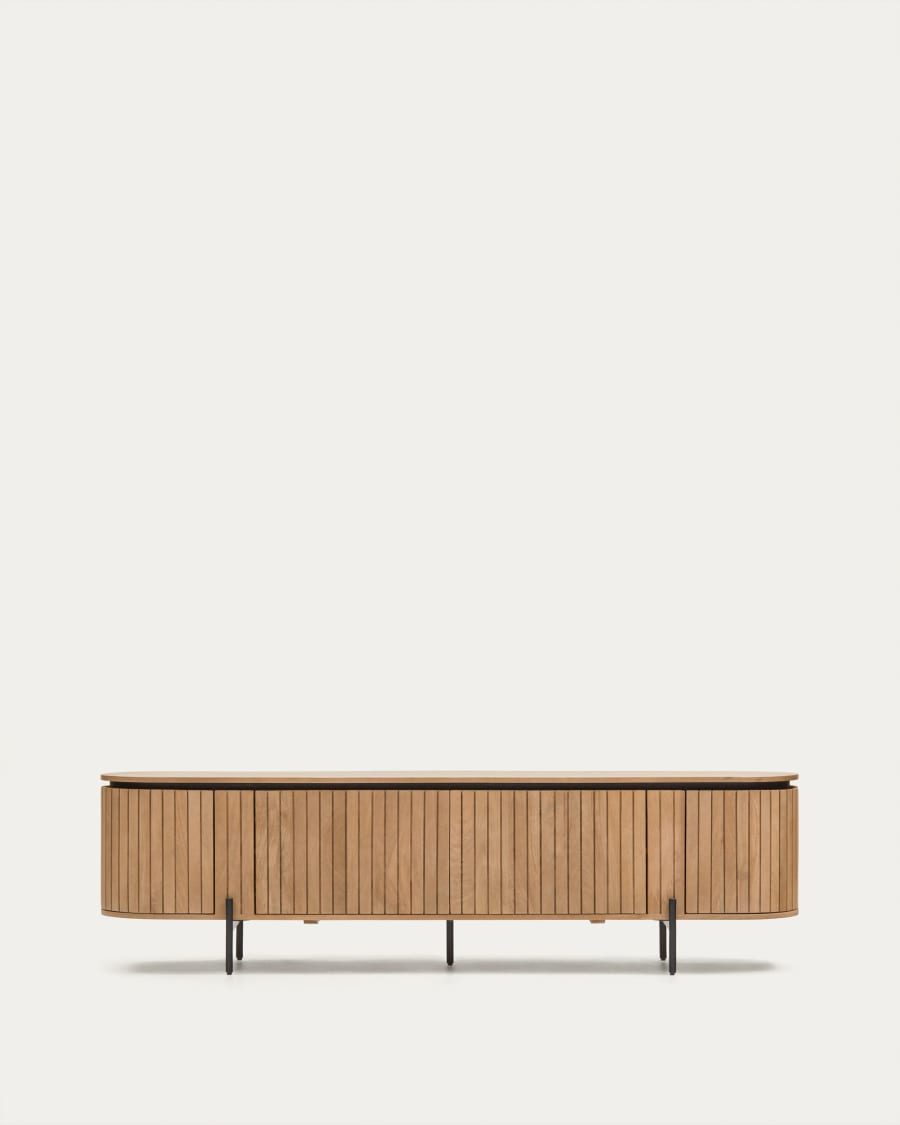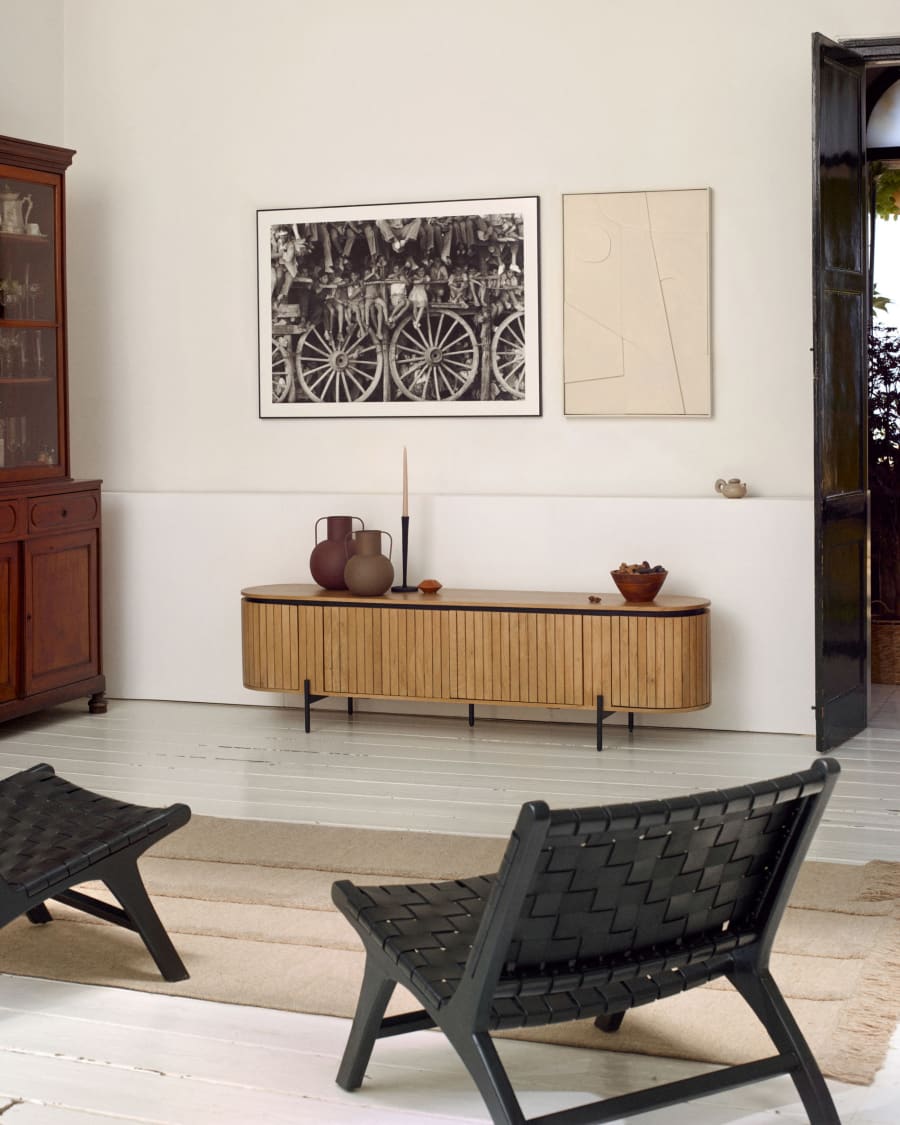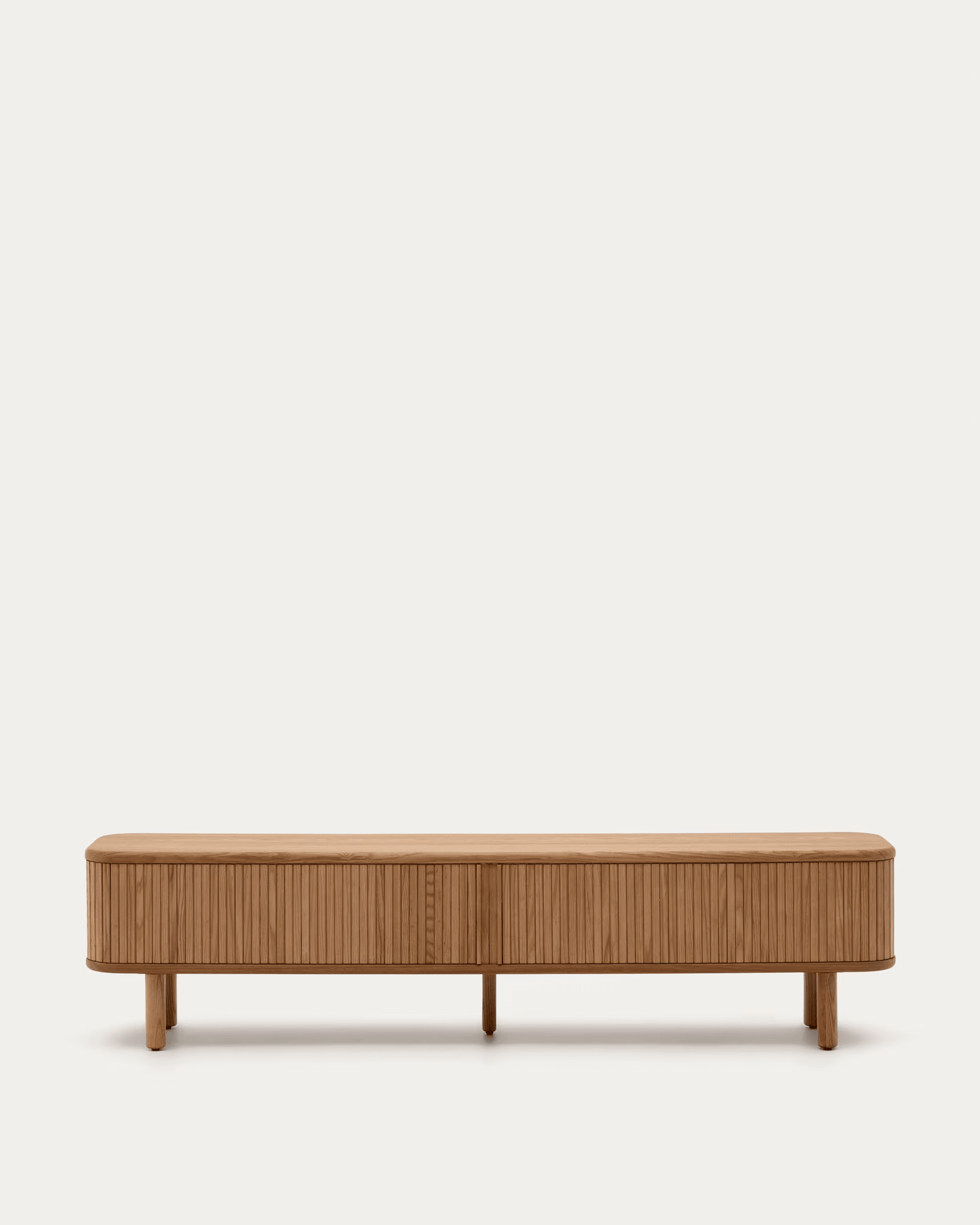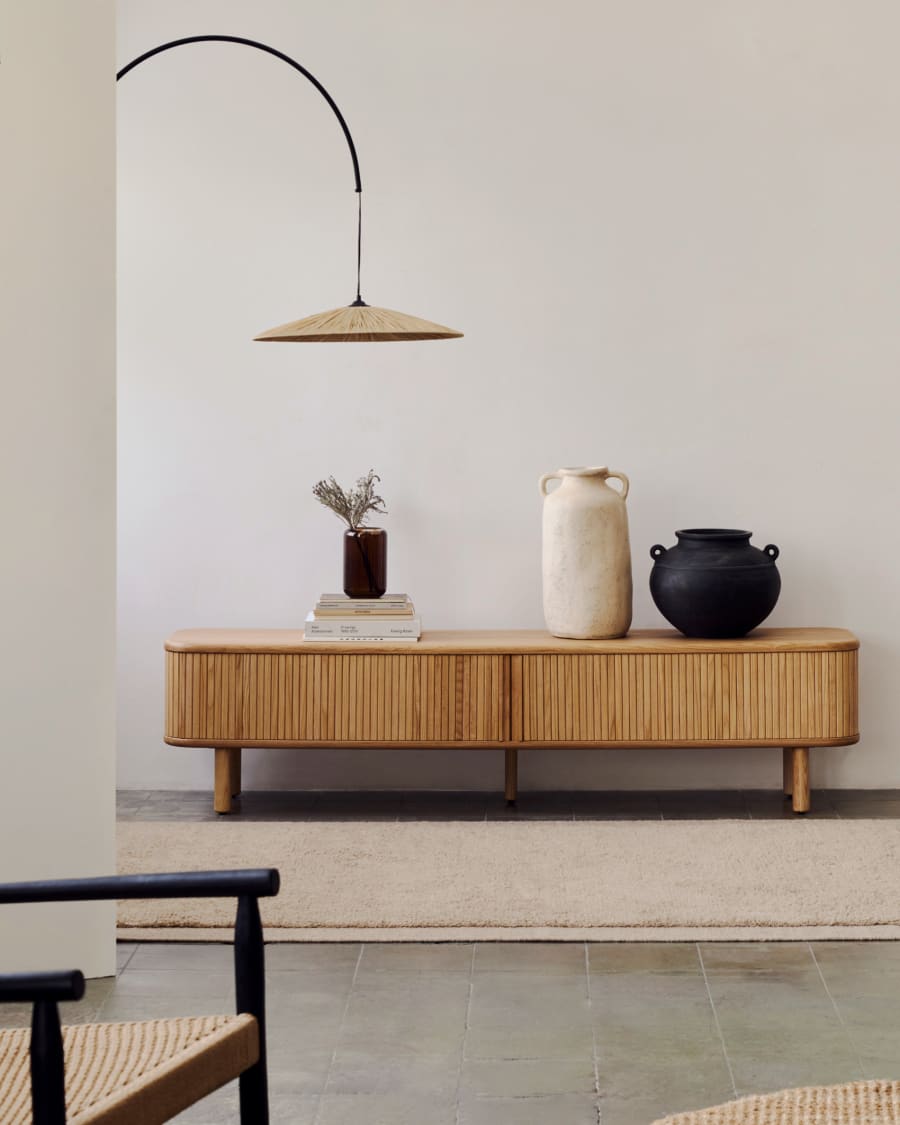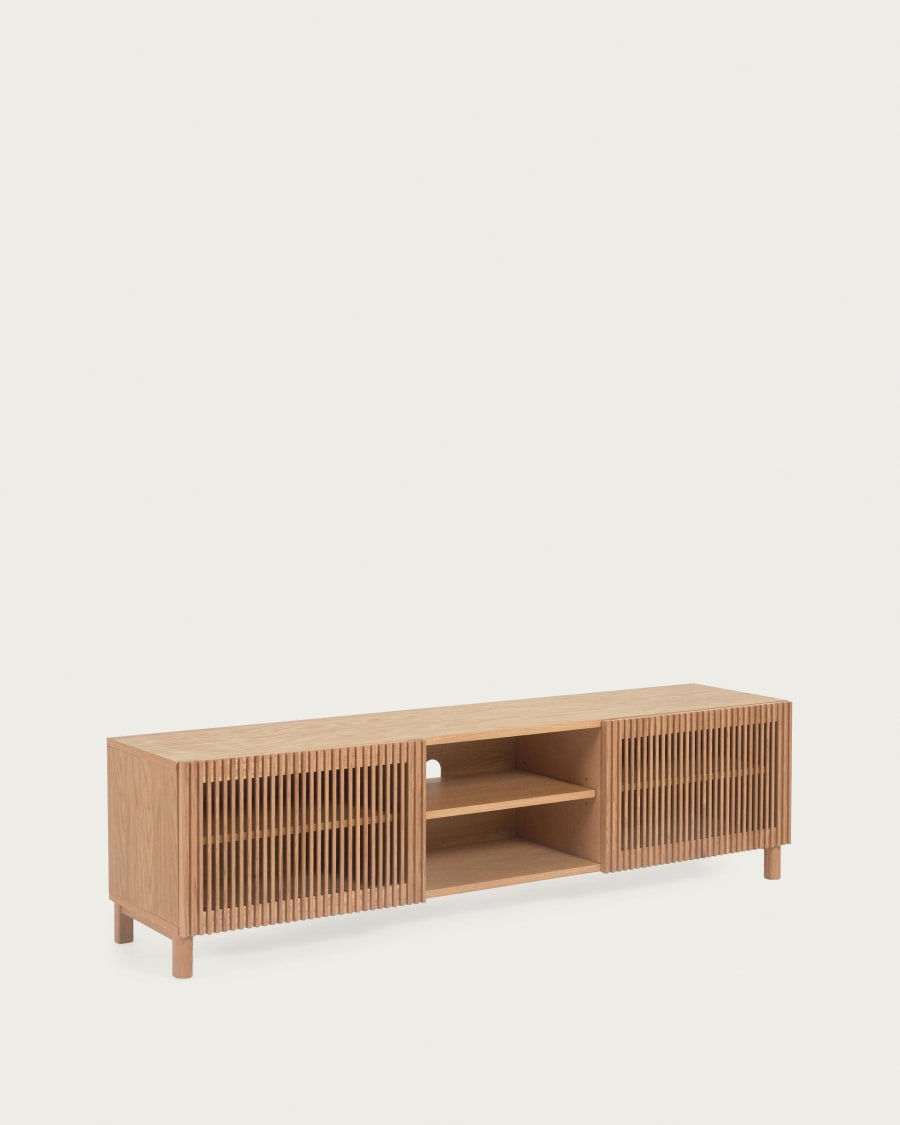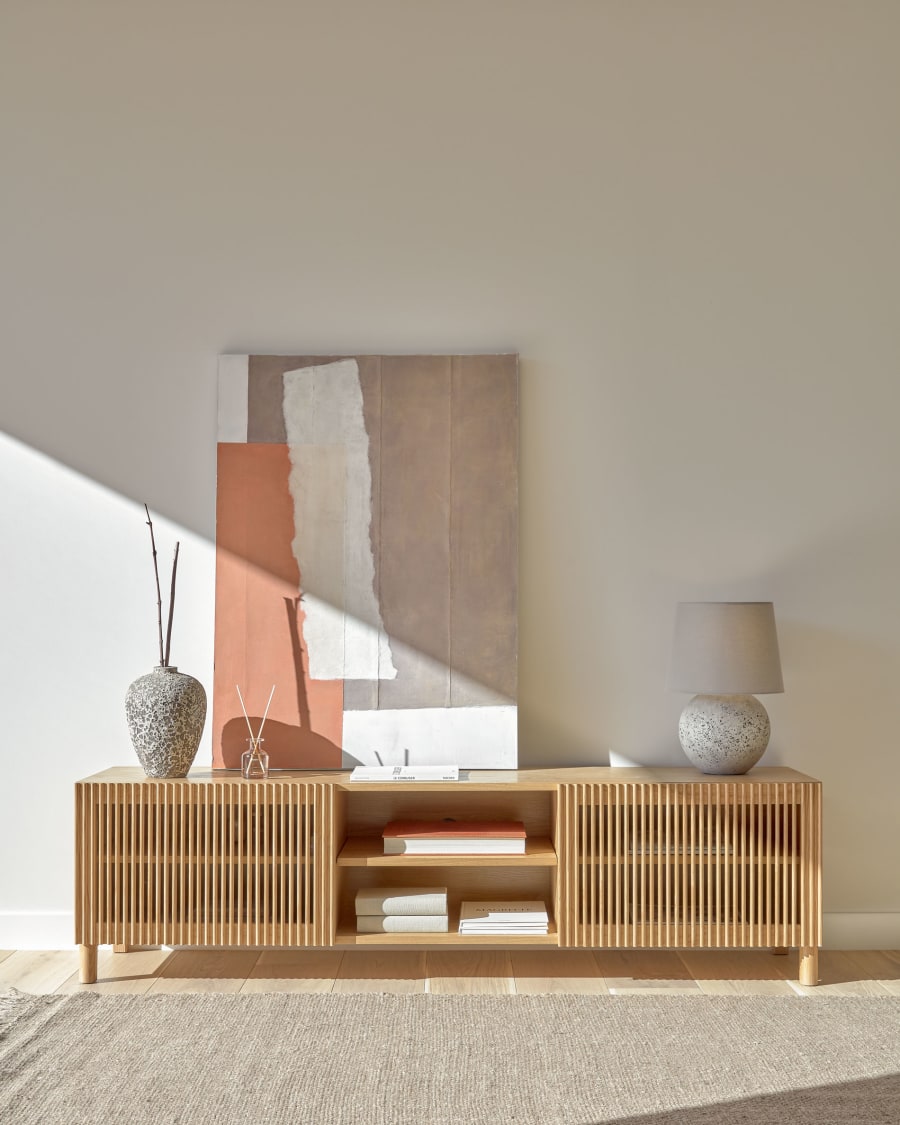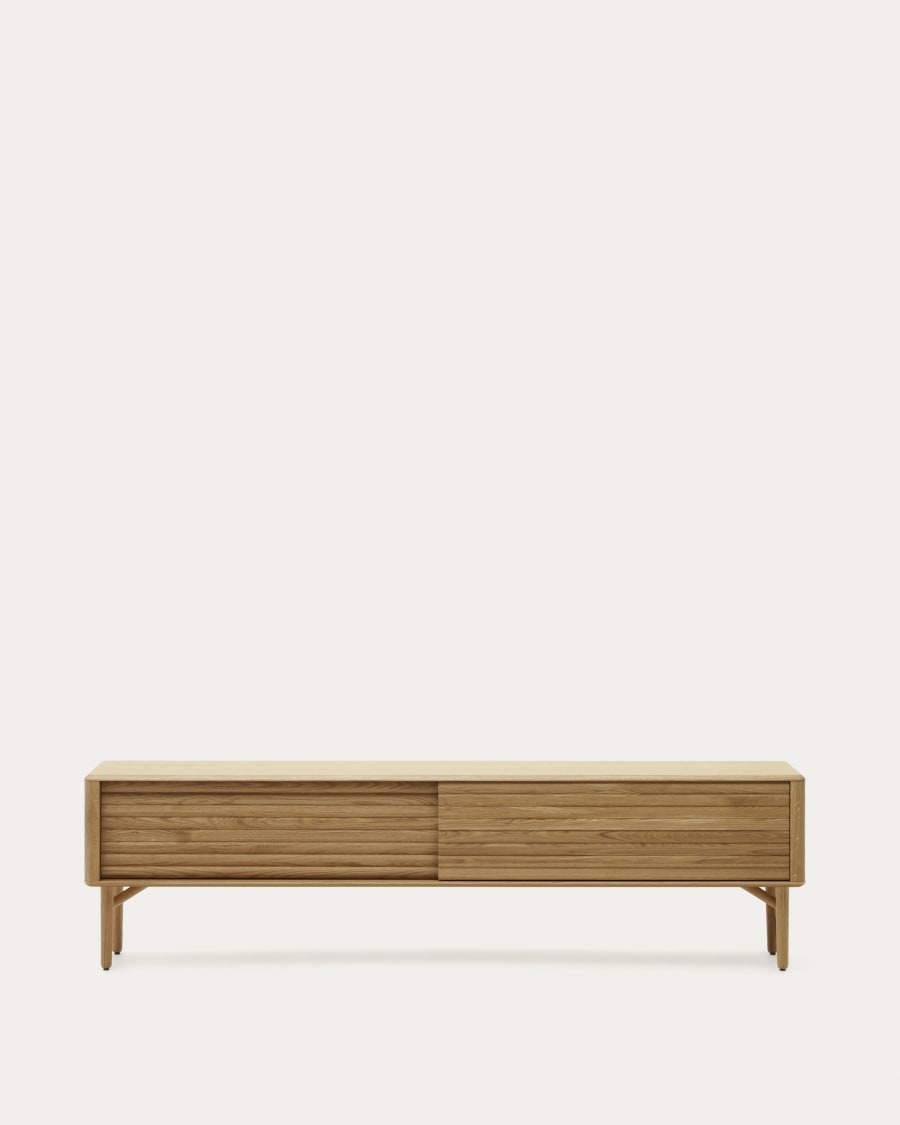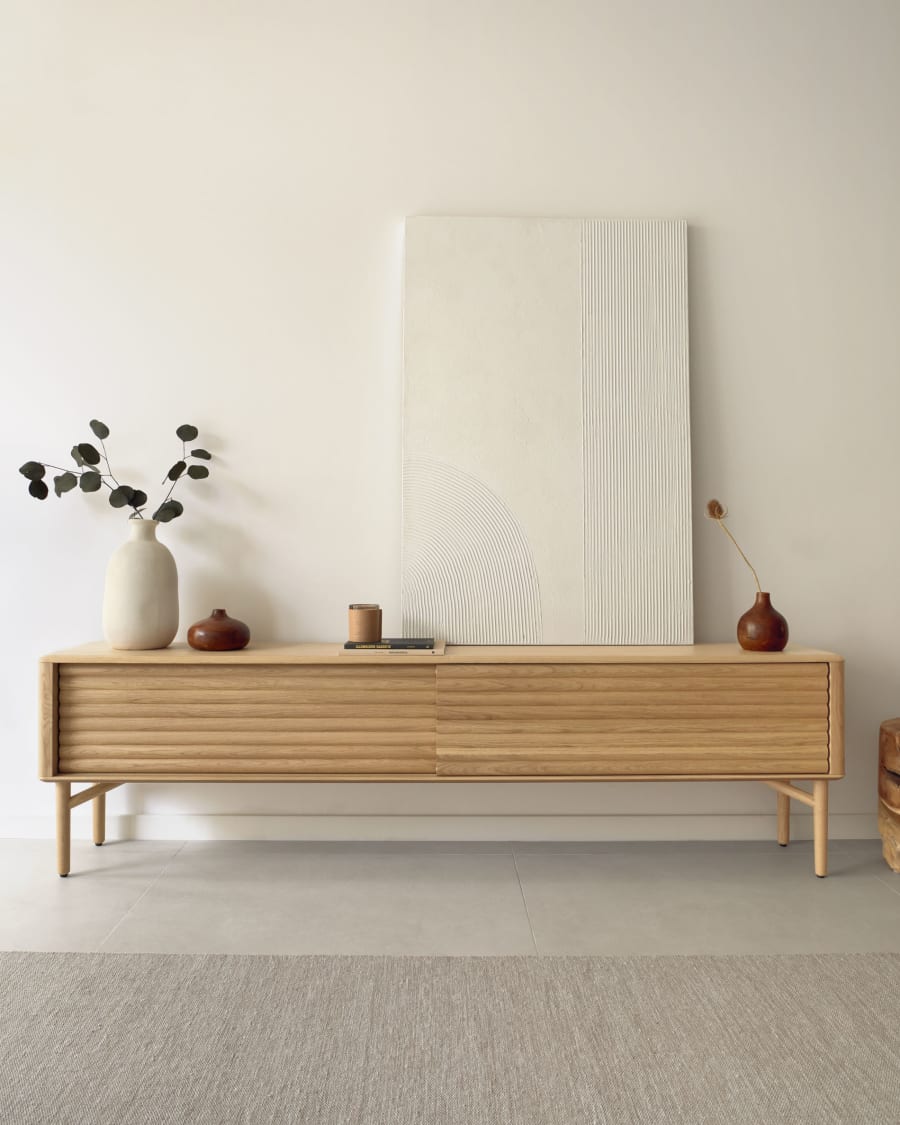- Home
- Japandi TV Stands
Japandi TV Stands
What Is A Japandi TV Stand?
A Japandi TV stand represents the perfect blend of Japanese minimalism and Scandinavian functionality. It’s not just a piece of furniture but a design philosophy that merges two distinct cultural aesthetics into one harmonious style. This fusion creates a media unit that serves both a practical and emotional purpose - offering storage solutions while promoting calmness and simplicity in living spaces.
At its core, Japandi design follows the principle of "Live with less. Feel more." This means every element on these TV stands serves a purpose, with no unnecessary embellishments. The design emphasizes clean lines and simple forms that create a sense of space, often featuring low profiles that contribute to a relaxed atmosphere. Natural materials play a crucial role, particularly solid wood like walnut or mango, which connect the piece to nature and add warmth to the space.
- Clean lines and simplicity: Focus on uncluttered, horizontal designs that create visual calm
- Natural materials: Solid wood construction brings organic warmth into modern interiors
- Neutral color palette: Earthy tones and muted colors that create a serene backdrop
- Mindful functionality: Thoughtful storage solutions that hide clutter while maintaining aesthetics
These TV stands go beyond basic furniture to become intentional design statements. They create peaceful focal points in living rooms while offering practical solutions for media organization. By combining the Japanese concept of Zen with the Scandinavian idea of hygge, Japandi TV stands help establish environments that feel both organized and comforting. Choosing this style means investing in a piece that lasts while embracing a more intentional approach to interior decoration.
How to choose your japandi tv stand
Japandi TV stands merge Japanese minimalism with Scandinavian functionality, emphasizing clean lines, natural materials, and purposeful design. These pieces balance aesthetics and practicality, creating calm environments by integrating storage solutions that align with the style’s "live with less" ethos. Every element serves a dual purpose—natural wood grains add warmth, while minimalist silhouettes prevent visual overload.
Focus on materials and craftsmanship
Japandi design relies on durable, natural materials like oak, walnut, and mango wood. Light finishes reflect Scandinavian simplicity, while darker tones add warmth. Craftsmanship ensures longevity through seamless joinery and eco-friendly finishes, supporting sustainable living by reducing the need for replacements. Hand-sanded surfaces highlight wood textures, while non-toxic oils or waxes enhance durability without masking natural beauty. These materials age gracefully, developing a patina that tells a story over time.
Consider size and profile for your space
A Japandi TV stand should match or exceed your TV’s width for visual harmony. Use this guide to choose:
| TV Screen Size | Recommended Stand Length | Design Tip |
|---|---|---|
| Up to 55 inches | At least 48-55 inches | Ideal for smaller living rooms or apartments |
| 55 to 65 inches | At least 58-65 inches | Versatile for most living spaces |
| 65 to 75 inches | At least 68-75 inches | Creates a strong horizontal line in larger rooms |
| 75+ inches | At least 80 inches or wider | Perfect for a cinematic media wall |
Low-profile or floating consoles maintain openness, while floor-standing units offer stability for larger TVs. Proportion is key to preserving visual flow. For instance, a 65-inch TV pairs best with a 68-inch stand to avoid imbalance. Floating designs work well in compact spaces, whereas wider units anchor open-plan living areas without feeling bulky.
Assess your storage and functionality needs
Storage in Japandi stands hides clutter without sacrificing accessibility. Explore these options:
- Open shelving: Display curated decor like ceramic vases, dried flowers, or ventilated devices. Ideal for rotating seasonal accents while maintaining airflow for electronics.
- Closed drawers/cabinets: Hide remotes, cables, and gadgets. Soft-close mechanisms prevent noise for a serene look. Opt for recessed handles to preserve clean lines.
- Combination designs: Mix open and closed storage for flexibility. These units keep essentials accessible while hiding daily items like gaming consoles or media boxes.
Hidden cable ports and adjustable shelves further enhance usability, ensuring cords stay organized without breaching the minimalist aesthetic. These features ensure functionality aligns with Japandi’s minimalist principles, blending practicality and tranquility seamlessly.
Styling your media area for a cohesive look
The Japandi TV stand is only one element of a harmonious living space. The wall behind it plays a pivotal role in achieving balance. Opt for neutral tones like soft grays or warm beiges to maintain serenity, or introduce subtle texture with slatted wood panels. Vertical slats add depth while echoing Japanese organic simplicity and Scandinavian clean lines. For seamless cable management, use built-in ports or wall-mounted channels painted to match the wall, preserving the style’s calm environment. Prioritize discreet solutions that align with the natural material focus—think wooden cable boxes in matching finishes or hidden compartments that blend into the design.
- Incorporate nature: A bonsai or dried branch in a ceramic vase bridges indoor-outdoor connection, a Japandi principle. A low-maintenance succulent or a simple dried pampas plume in a linen-wrapped vase achieves the same effect without ongoing care.
- Choose simple art: Abstract prints or minimalist calligraphy add visual interest without clutter. Frame pieces in light wood tones like oak or natural fibers to echo the room’s material consistency.
- Play with textures: A woven rattan basket or rough-hewn ceramic vase introduces tactile variety. Focus on subtle contrasts within the neutral palette—consider a linen-covered tray or smooth river stones for quiet sophistication.
- Mindful lighting: A paper lantern floor lamp or wall-mounted sconces with linen shades create a warm glow. Dimmable recessed lighting above the stand enhances ambiance without overwhelming the space.
Harmony extends beyond the stand to the room’s flow. Furniture like sofas, coffee tables, and rugs should echo natural materials and muted tones. Scandinavian functionality meets Japanese wabi-sabi in practical yet soulful pieces—think low-profile sofas with clean lines paired with wool or jute rugs. Add a wooden side table with rounded edges to mirror the stand’s curves, or a linen-upholstered armchair to reflect the neutral tones. Even functional decor, like a side table with hidden storage, can reinforce the balance of form and function. This synergy ensures the media area feels like a natural extension of the space, not a competing focal point. The result is a unified sanctuary where every element contributes to a calm environment, blending minimalism with warmth through intentional, purposeful design choices.
FAQ
What defines a Japandi TV stand's unique design philosophy?
Japandi TV stands embody the harmonious blend of Japanese minimalism and Scandinavian functionality. Rooted in principles like "Live with less. Feel more," these pieces balance serene aesthetics with practicality. Characterized by clean lines, natural materials like solid walnut or light wood, neutral earthy tones, and mindful storage solutions, they create calming focal points in modern living spaces while prioritizing durability and timeless appeal.
Why are natural materials emphasized in Japandi TV stand construction?
Natural materials like sustainably sourced hardwoods (walnut, oak, ash, or teak) and accents like bamboo or rattan are central to Japandi's connection with nature. These elements bring warmth and texture while aligning with the style's emphasis on longevity and environmental consciousness. Scandinavian light woods often contrast subtly with darker Japanese-inspired tones, creating visual depth without compromising the design's serene essence.
How do I determine the ideal size for a Japandi TV stand?
For optimal visual balance, your Japandi TV stand should extend at least 2-4 inches beyond your TV's width. For example, a 55" TV (47.9" wide) pairs best with a 48-55" stand. Lower profiles are preferred to maintain an unobtrusive presence. Floating consoles offer space-saving elegance, while floor-standing units work well for larger screens. Always account for bezel width when measuring.
What storage solutions work best with Japandi TV stands?
True to its "mindful functionality" ethos, Japandi TV stands integrate discreet storage. Closed cabinets with soft-close mechanisms hide electronics and cables, while open shelves display curated decor like ceramic vases or bonsai plants. Combination designs balance both styles. Prioritize units with integrated cable management systems to maintain the clean, clutter-free aesthetic.
How can I style my media area to complement a Japandi TV stand?
Extend the Japandi ethos to your entire media wall by pairing the stand with textured natural elements like vertical wood slats or whitewashed finishes. Incorporate intentional accents such as a single dried branch in a ceramic vase or minimalist abstract art. Use soft, indirect lighting like paper lanterns to enhance serenity, and coordinate with neutral-toned furniture to maintain the space's cohesive, calming atmosphere.
